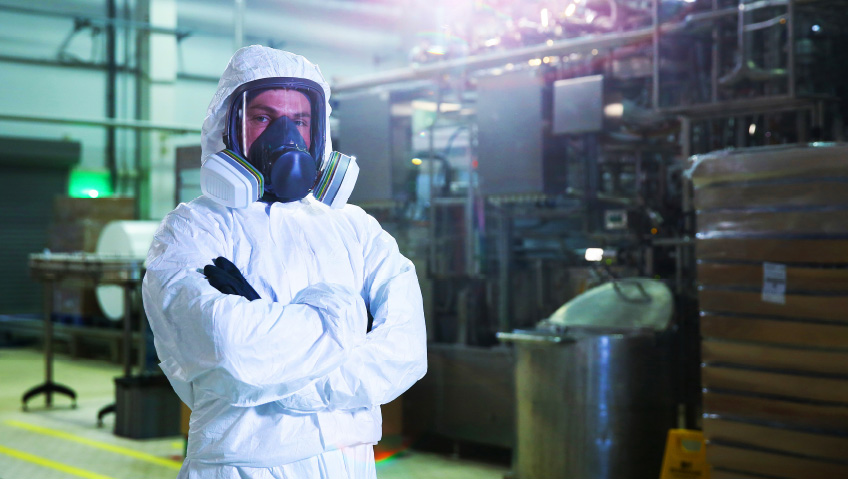As the COVID-19 pandemic has made personal protective equipment something everyone has had to think about, designers of such gear are stepping up to the challenge of creating more comfortable, more effective equipment and workwear for those who need it most.
The result is that a robust research and development drive is on to protect employees from physical harm in increasingly modern ways. Based in Arlington, Virginia, the International Safety Equipment Association (ISEA) reported on March 1 this year that the National Institute for Occupational Safety and Health (NIOSH) is looking to create “centers of excellence to provide improved research and development around personal protective equipment and technology (PPE and PPT).”
PPT incorporates clothing with technology to achieve hybrid protective wear often capable of responding to body temperatures. Such ‘smart’ clothing and gear can be designed to alert the wearer of dangers such as extreme heat, toxic gases, or dangerous materials like some metals.
The ISEA media release stated that “ISEA applauded the effort to encourage innovative thinking,” which would improve occupational health and safety. It also said that “In a letter to the NIOSH National Personal Protective Technology Laboratory (NPPTL), ISEA has outlined the needs for PPE and PPT research and provided an overview of potential projects and issues in multiple areas of safety.”
As part of these efforts, the association further reported that it is looking toward including a couple of PPE fabricators as part of its board of advisors. The ISEA has spotlighted several areas of future study for the NPPTL, including climate change and its impact on PPE, “public-private partnerships to share advanced machinery and technology,” and much more
In an article featured last year by management consulting firm McKinsey & Company, the PPE market has increased “from $13.5 billion in 2019 to an estimated $24.3 billion in 2024,” with protective clothing expected to occupy around $5.4 billion of that space within two years. This while market studies company Fortune Business Insights predicts the global PPE market growth to hit $92.86 billion around 2027. The McKinsey report counsels that, to position themselves optimally, PPE fabricators would do well to study the trajectories of the fastest growing players in the markets most in need of their products, in addition to optimizing efficiency and capabilities.
As a result, the competition is growing as North American companies continue to contribute to the field of making the world of work a safer place by protecting workers’ respiratory tracts, eyes, skin, hands, heads, ears, feet, and lives especially when working at extreme temperatures, heights, speeds, or depths.
With environmental temperatures rising, heat stress risk is one of the main considerations when designing personal protective gear these days. Considering that there were nearly forty heat-related deaths per year and well over 2,500 annual, dangerous, heat-related illnesses needing time off as reported to the U.S. Department of Labor Bureau of Labor Statistics (BLS) from 2011 to 2019, the time is ripe for improved measures.
One brand making headway in the PPE market since 1983 is Ergodyne. Headquartered in Saint Paul, Minnesota, this company prides itself on creating ‘tenacious work gear’ that includes some of the most effective cooling gear available in the mainstream US market today. Turning to advanced fabric varieties and other smart design elements, its range includes everything from hard hat cooling gear to cooling vests.
Its Chill-Its range of terry cloth hat liners, shade rims, and sweatbands are designed to give the wearer a comfort level that is significantly higher than that of a traditional hard hat, while its Chill-Its high visibility safety cooling vests employ ‘polymer-embedded cooling technology,’ offering around half a work day’s lightweight heat protection to outdoor workers. In addition, its innovative, knitted material arm sleeves have properties such as an ultraviolet protection factor of up to 50+ and a rapid cooling feature activated by moisture. The design diverts the wearer’s perspiration from the skin when the product is not wet, ensuring all-day comfort.
Hearing protection has been around for quite some time but is also seeing technological additions. Honeywell, one of the world’s largest PPE manufacturers in 2021, offers in-ear hearing protection headphones complete with Bluetooth connectivity or digital AM/FM radio among its selection.
But it is not only protective clothing that is currently in the spotlight. Office designers are also continuously improving comfort levels with controlled ambient temperatures and ergonomic furniture. Just as with clothing, this sector is also introducing modern fabrics and materials to improve employee comfort as much as possible.
Anti-fatigue mats are just one example of this. Smart Step’s premium performance mats are proudly and entirely manufactured in the United States from locally-sourced, appropriate, and safe materials. These mats promise to “help protect employees from serious health risks associated with static postures and reduce injuries, sick days, and worker’s compensation claims.”
Its quality assurance boasts a ten-year warranty and comes complete with such safety characteristics as a secure grip-to-surface feature, bright highlights for easy identification, as well as an engineered top surface that allows for a stable foot grip to prevent slipping. These mats are already a favourite in the hospitality industry, the salon and fitness market, and industrial, medical, and other fields.
Chairs, of course, also remain fundamental to worker safety and comfort even in home offices. Chiropractor Dr. Randi Jaffe recently advised readers of The Strategist to invest in adjustable chairs that allow for “90-degree angles at the waist and knees.” Her favourite is reported to be the Herman Miller Aeron Chair, singled out over nearly two decades for its superb back technology that adjusts as the user moves, offering continued support throughout, whether the user is tilting the chair at an angle or not. Being short, I am forever grateful for chairs that allow my feet to touch the floor and am particularly impressed with the small, medium, and large sizes in which the chair is fabricated, making it an option for a wide range of body types.
While there are many concerning issues happening in the world right now, it comes as a great comfort to know that there are qualified teams of people out there taking care of the small details that make everyday life safer and more comfortable, especially at work.






